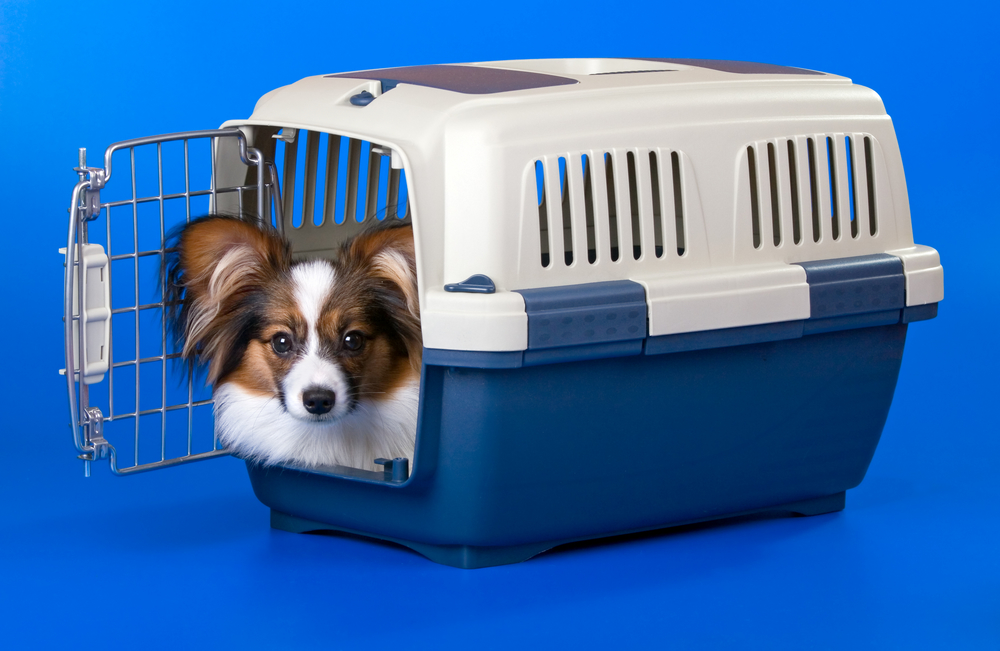Relaxing comfortably in a crate or carrier is a critical canine skill with many applications. A dog’s crate is an important management tool that assists in building better behaviors and deterring unwanted antics such as chewing furniture instead of appropriate toys or eliminating on the rug instead of outdoors. A kennel is also a protected place where dogs can be housed temporarily during times of excitement or stress, such as when company arrives or workers are going in and out of the house. During car travel and at destinations, crates and carriers are homes away from home. Finally, teaching a dog to rest in a crate or carrier is beneficial for building comfort with the crate in preparation for events such as airline travel, veterinary care, or stays at a grooming or boarding facility.
The key to successful crate and carrier training is building a positive association by pairing the space with feel-good occurrences. Avoid pushing, pulling, or corralling the dog into the crate or carrier. Instead, let dogs investigate the area at their own pace.
Make It Special
To gain your dog’s voluntary movement into a carrier or crate, lay a Hansel-and-Gretel-type treat trail into the space. Randomly leave treats, chews, and toys in the space throughout the day to encourage the dog to return and investigate. Reward any interaction the dog makes with the space, including sniffing it, entering it, or resting inside. Keep treats or favorite toys nearby to reinforce the dog for those reward-worthy moments.
Smearing a soft spreadable treat on the inside edges and back of the crate can also encourage the dog to move all the way in. Or place a stationary food puzzle inside the kennel space. Initially, leave the puzzle at the front of the carrier or crate. Each time you refill it, place it farther toward the back of the kennel space to encourage the dog to move all the way inside. At first, keep the door open to allow free choice to move in and out.
Practice Stays Inside
As the dog stays relaxed, close the door for short periods, starting with only a couple of seconds before reopening. Gradually extend the duration as the dog remains calm. Reinforce the dog for relaxation by dropping in treat rewards through the slats of the crate or carrier. You can also give a stuffed food puzzle or favorite chew in this space as the dog rests inside.
Promote regular resting in the space by placing the dog’s kennel or crate in an area of the home where your dog already enjoys napping. Keep the door open to allow the dog to go in and out freely and regularly feed meals or drop treats or toys inside to encourage your dog to go in. In addition, outfit the space with plush bedding and infuse with Adaptil, a calming pheromone, to promote relaxation.
Carry Over
Dogs may have more than one crate or carrier they use, such as one that’s a permanent fixture in the home and one that’s designated for travel. It’s helpful to train dogs separately to each space. The foundation laid during prior training increases the ease and speed of training your dog to adjust to other, similar spaces.
Keep in mind that the solution for a a dog who tries to push, claw, chew, or otherwise escape out of a crate is not to invest in increasingly industrial-strength crates. Instead, if a dog displays signs of fear, anxiety, and stress (FAS) when crated or left alone, it’s important to address the root cause of the behavior by seeking the advice of your pet’s Fear Free veterinarian who may partner with the help of a reward-based trainer, applied animal behaviorist, or board-certified veterinary behaviorist.








